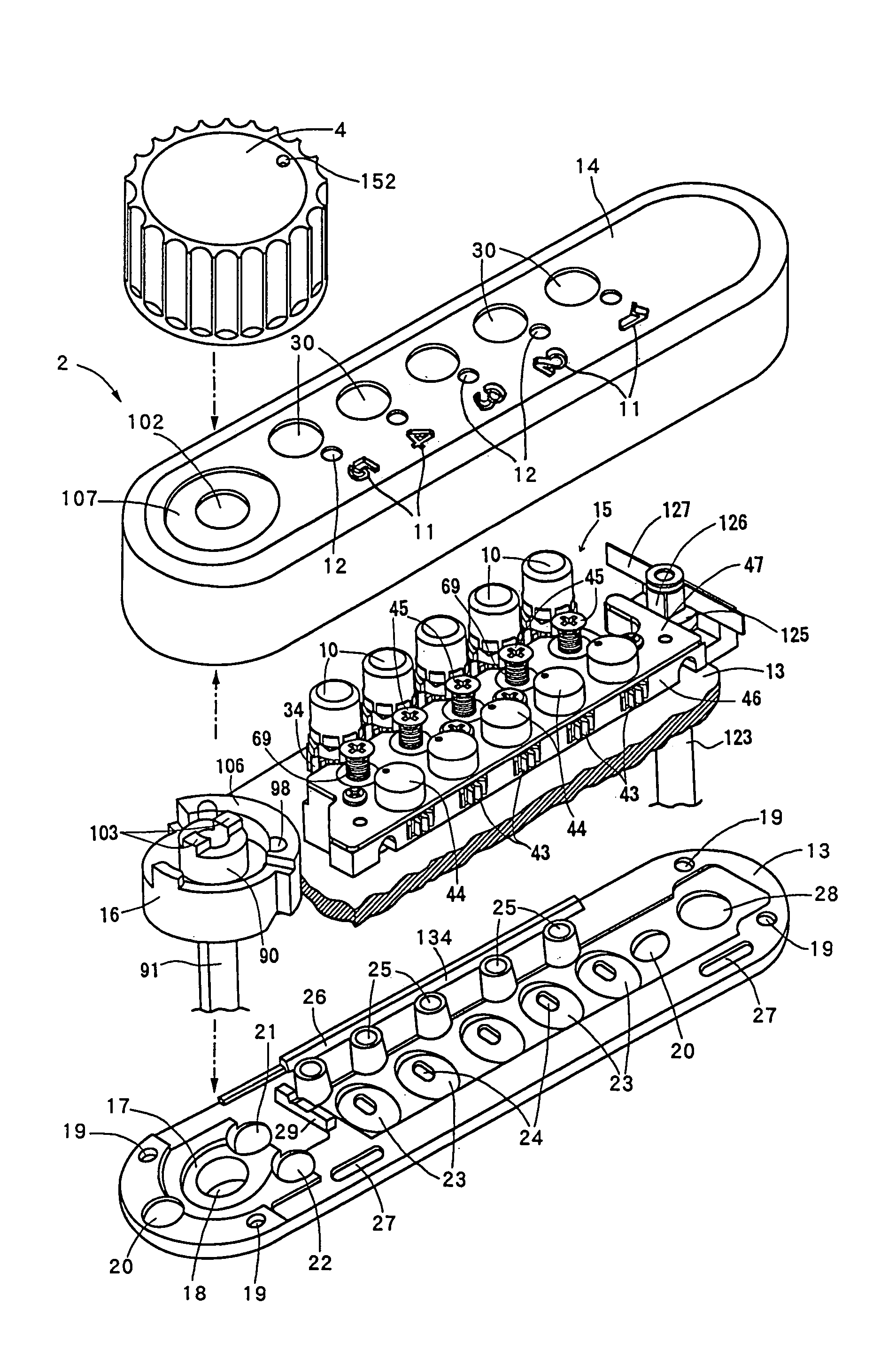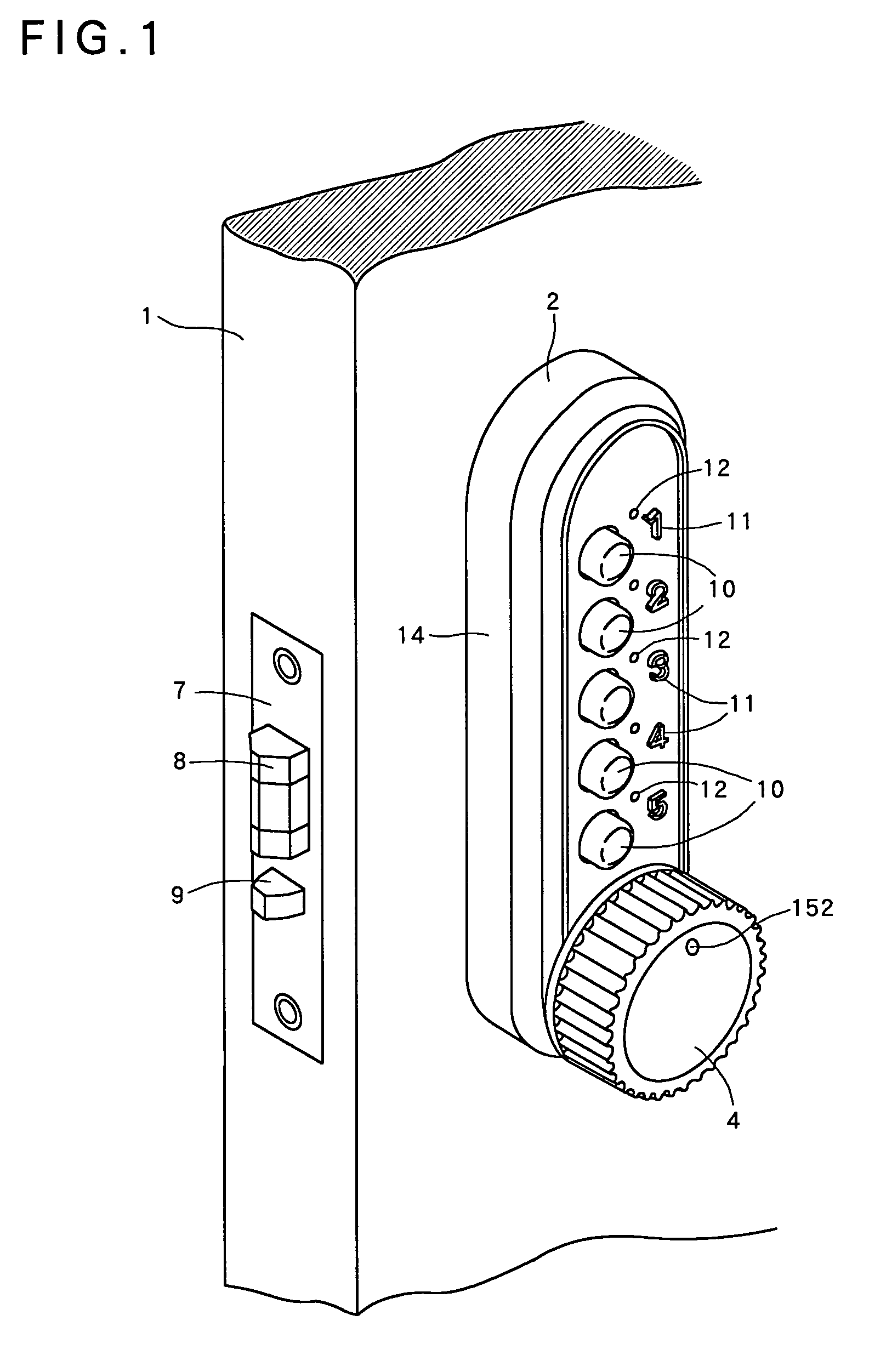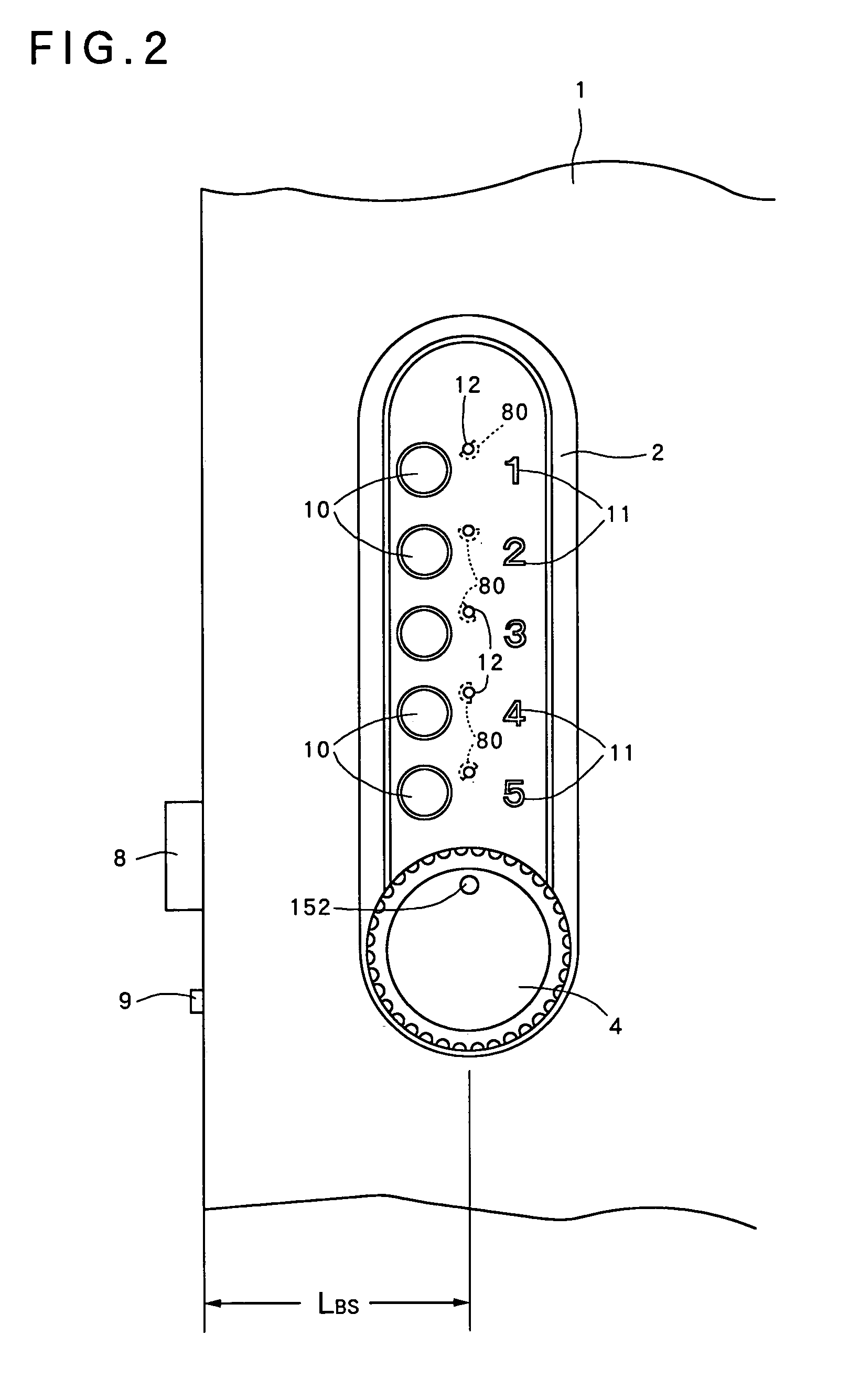Button lock
a button-operated lock and button technology, applied in the direction of mechanical control devices, keyhole guards, instruments, etc., can solve the problems of large size and heavy weight of the entire button-operated lock, unobtainable enough safety performance, and insufficient setting amount of information, so as to achieve enhanced safety performance, wide selection range, and reduced number of control buttons
- Summary
- Abstract
- Description
- Claims
- Application Information
AI Technical Summary
Benefits of technology
Problems solved by technology
Method used
Image
Examples
Embodiment Construction
[0106]The present invention will be described hereinafter in the form of one preferred embodiment with reference to the accompanying drawings. In FIGS. 1 through 36, reference numeral 1 denotes a left suspension type door, which one end part on the suspending base side is turnably attached to a framework (both of them are not shown) through a hinge, and a main lock (not shown) of the present invention is embedded in the other side end part.
[0107]A vertically elongated oval-shaped button-operated lock 2 is disposed at the other side end part of the outdoor of the door 1. A seat plate 3 having a generally same configuration as the button-operated lock 2 and having a small thickness is disposed at the indoor side of the door 1.
[0108]The button-operated lock 2 and the seat plate 3 are provided at lower end parts thereof with door handles 4, 5, respectively, such that the door handles 4, 5 can turn independently. A changeover knob 6 such as a thumb turn knob is attached to an upper end p...
PUM
 Login to View More
Login to View More Abstract
Description
Claims
Application Information
 Login to View More
Login to View More - R&D
- Intellectual Property
- Life Sciences
- Materials
- Tech Scout
- Unparalleled Data Quality
- Higher Quality Content
- 60% Fewer Hallucinations
Browse by: Latest US Patents, China's latest patents, Technical Efficacy Thesaurus, Application Domain, Technology Topic, Popular Technical Reports.
© 2025 PatSnap. All rights reserved.Legal|Privacy policy|Modern Slavery Act Transparency Statement|Sitemap|About US| Contact US: help@patsnap.com



